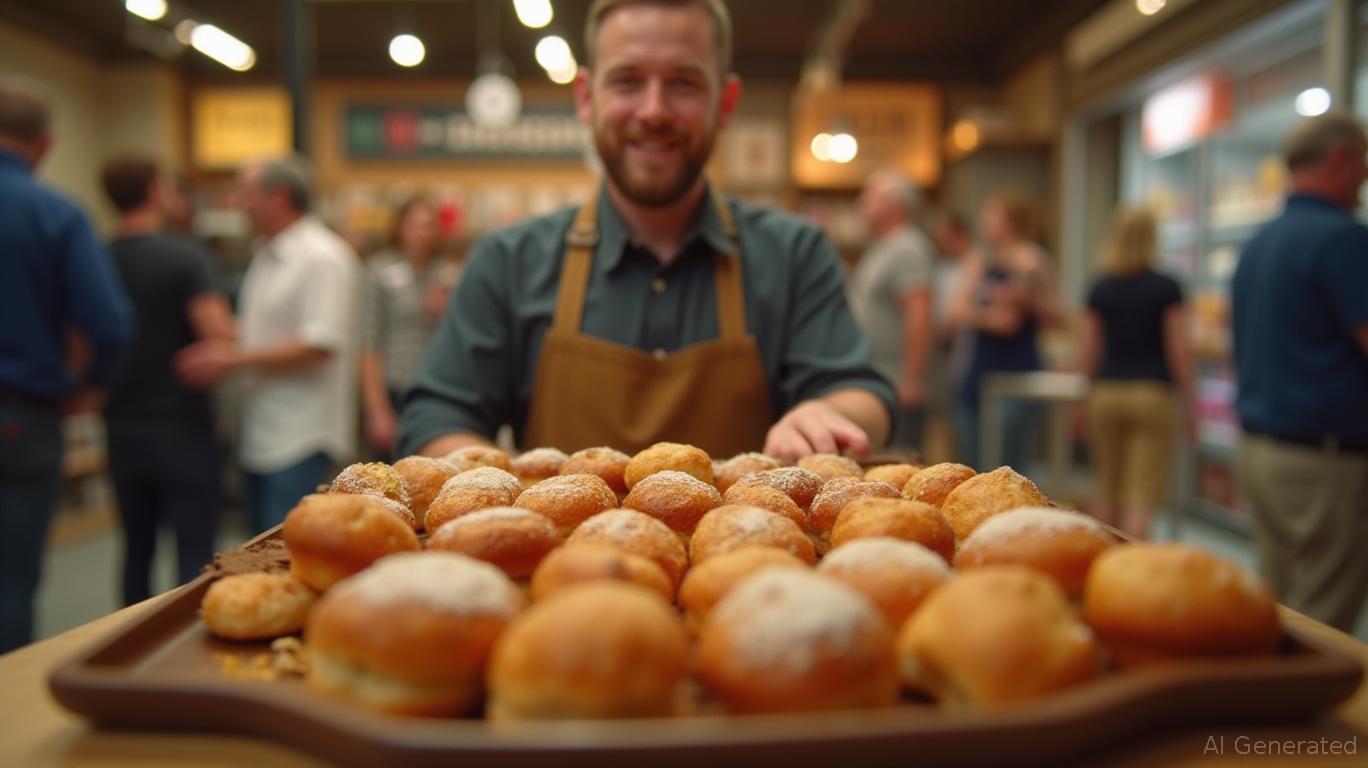Why Greggs (LON:GRG)' Strong Returns on Capital Signal Long-Term Growth Potential
Greggs (LON:GRG), the UK's leading fast-food bakery chain, has quietly built a fortress of financial resilience. Its consistent ability to generate Return on Invested Capital (ROIC) that handily exceeds its Weighted Average Cost of Capital (WACC) underscores a management team that allocates capital with precision. For income-focused investors seeking both growth and stability, Greggs' metrics today suggest a compelling entry point.

ROIC: The Engine of Value Creation
Greggs' ROIC has averaged 15.97% over five years, significantly outperforming the UK Restaurants industry median of 10.24%. In the trailing twelve months (TTM) ending June 2025, its ROIC stands at 14.35%, while its WACC is 11.99% (). This spread—ROIC exceeding WACC—means every pound Greggs invests generates more than 24% excess returns over its cost of capital. Such performance is rare in a sector where many peers struggle to break even on capital employed.
The consistency is striking. Even as ROIC dipped slightly in 2025 from its late-2024 peak of 16.93%, it remains robust. This stability reflects Greggs' vertically integrated supply chain, cost-conscious expansion strategy, and a menu that caters to both budget-conscious shoppers and health-conscious consumers (e.g., its vegan sausage rolls and plant-based steak bakes).
Margins and Efficiency: The Fuel of Growth
Greggs' 61% gross profit margin in 2024 highlights operational efficiency unmatched by peers. Its Return on Equity (ROE) of 28.7% further signals profitability derived from smart asset management. These metrics are underpinned by a debt-free balance sheet—a rarity in a sector where many competitors rely on leverage to fund growth.
The company's focus on store density and format innovation has driven sales. With 2,618 locations (2,057 company-managed, 561 franchised) as of late 2024, Greggs has become a ubiquitous presence in the UK's food-to-go market. Its 2024 sales hit £2.01 billion, a 11.3% year-on-year increase, while 2025 first-half like-for-like sales rose 2.9% after an initial soft patch. This resilience, despite rising inflation and wage pressures, speaks to its pricing discipline and menu flexibility.
Market Leadership and Share Gains
While precise market share figures are elusive, Greggs' rankings and sales trends paint a clear picture. In early 2025, a Statista survey named it the UK's most popular fast-food brand, with a 70% favorable opinion rating, ahead of McDonald's and Domino's. Its 24-hour trial stores and drive-through expansions (now in 20 locations) are capturing untapped demand in convenience-driven eating.
Crucially, Greggs is out-executing rivals in the £30 billion UK food-on-the-go market. Competitors like J D Wetherspoon or Whitbread face structural challenges—Wetherspoon's pub model struggles with rising alcohol taxes, while Whitbread's Costa Coffee division battles saturation. Greggs, by contrast, benefits from low capital intensity (no on-site kitchens, minimal staff) and a high-margin product mix (70% of sales from £1–£3 items).
Valuation: A Bargain for Income Investors
At a P/E ratio of 13.71 (vs. a 10-year average of 5.70), Greggs trades at a 41% premium to its recent historical average—but this is still 57% below analysts' fair value estimates. The stock's 3.8% dividend yield (vs. the industry median of 0.64%) offers income stability, backed by a payout ratio of 11.99%, leaving ample room for growth.
Analysts are bullish: 12 out of 14 recommend a "Buy" with an average 12-month price target of £3,307.90—a +19.6% upside from current levels. Even skeptics like Deutsche Bank, which briefly downgraded it to "Sell" in 2024, have since acknowledged Greggs' cost management and pricing agility as mitigants to inflation.
Risks, But Manageable
- Inflation and wage pressures: Greggs has absorbed 8% wage hikes and 6% cost inflation in 2025 without major price increases. Its TTM NOPAT (Net Operating Profit After Tax) of £157.5 million provides a cushion.
- P/E volatility: While its P/E has swung from -139% in 2020 to +28.82 in 2021, today's 13.71 is reasonable given its ROIC-WACC spread and dividend.
Conclusion: A Buy for the Long Term
Greggs' ROIC-WACC differential, dividend yield, and dominant market position make it a rare gem in the UK's volatile food retail sector. With 140–150 new stores planned for 2025 and expansions into evening/online sales (now 9% and 6.7% of revenue), its growth runway remains intact.
For income investors, the 3.8% yield plus the 19.6% upside potential is a compelling case. Greggs is not just surviving—it's thriving by turning capital efficiency into a moat. The question isn't whether to buy, but why you're not buying now.
Recommendation: Buy with a 12-month target of £3,307.90.
Data as of June 2025. Past performance is not indicative of future results. Always conduct your own research or consult a financial advisor.

Comments
No comments yet